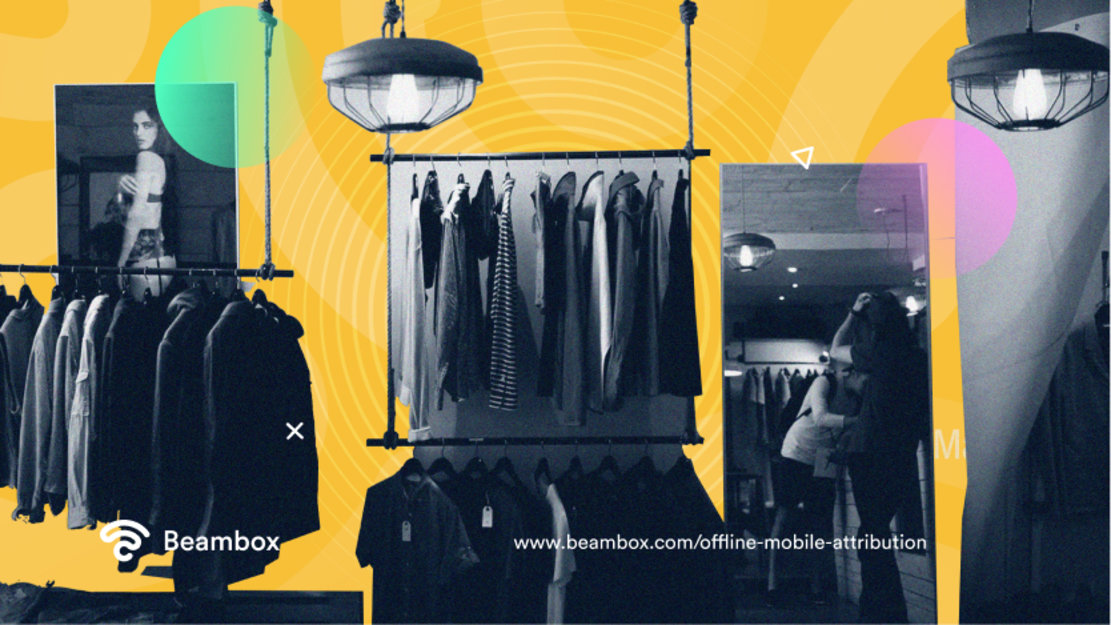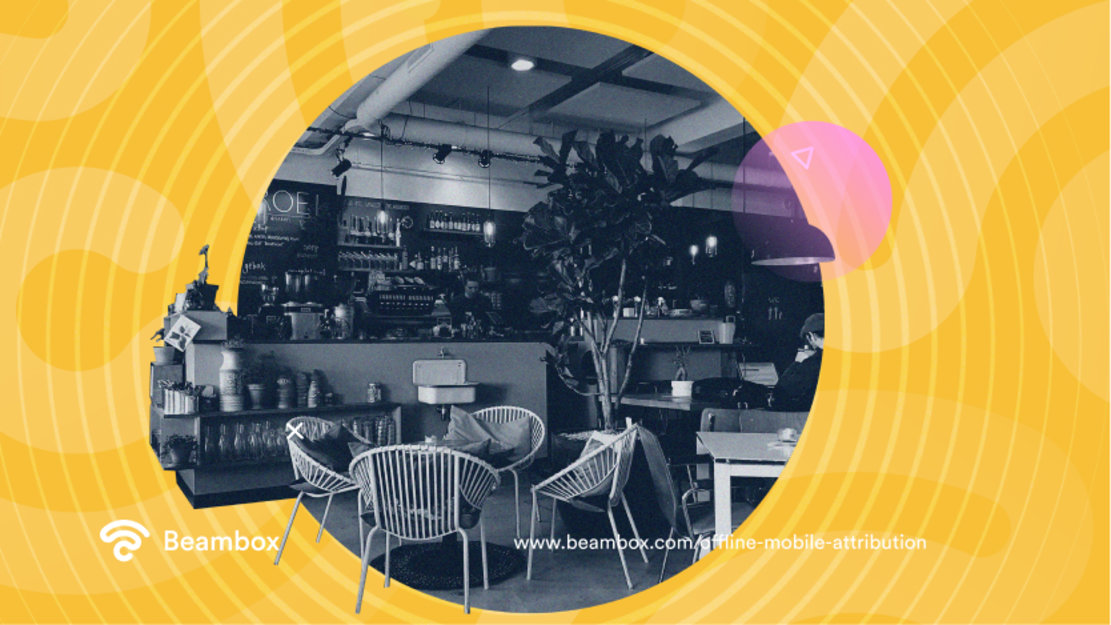Offline Mobile Attribution: An Effective Way To Improve ROI
Good marketing is crucial for a business to improve its ROI. Retailers need to know which initiatives attract customers and which don’t. Offline mobile attribution lets you know which digital ad leads to a physical visit to the store.
In this article, you can read everything about offline mobile attribution and how to use it in your business to increase the ROI.
Offline Mobile Attribution: What Attribution Means in Marketing?

Attribution is a marketing term, and it’s the process of assigning cause to an event.
For example, which ad was it in the buyer’s journey that drove the consumer to make a purchase? Offline mobile attribution is the data of online marketing leading to offline results (more about this further down).
Digital marketing has changed how we view ads and their effectiveness of them. One ad in a newspaper is going to get little attention. You’ll need different ads on alternative platforms, targeting the right people.
With so many ads out there, it’s hard to know which ones impacted consumers and led them to your store. Knowing this is the only way to repeat a successful campaign or ad.
Analyzing consumer behavior for online stores is simpler than with physical stores. The website’s host stores all actions of the user. That means the website owner knows how the consumer found their site, where they lingered, what they clicked on, etc.
You must use other solutions to gather customer data in the meat space. For example, you can use WiFi marketing software to collect data directly from your customers when they connect to your internet.
What Is Mobile Attribution?
Mobile attribution can mean two things: - Data collection through apps: what led someone to download an app or what made them buy something within it.
- It’s also data collected from mobile devices. For example, you can credit a sale to a specific ad shown on Facebook or Instagram. Online you can also collect the user’s information. Then you can advertise to them individually based on their actions and which ads they clicked on.
Many ask, “what is mobile attribution” while neglecting the specifics of offline mobile attribution, which is equally important.
Offline mobile attribution is when you analyze online actions leading to an offline purchase. For example, when a consumer buys a product at your store. This is more difficult to analyze, but it’s possible and beneficial for you as a business owner.
Offline Mobile Attribution: Online Marketing to Offline Results
Offline mobile attribution is the traffic you generate based on your paid marketing strategies. What caused a particular sale? Which ad led them to your store? It’s the results of your online presence leading to people shopping in your physical store.
Business owners must know which ads work to convert leads into paying customers. But almost more important, knowing which ads don’t work.
We receive large amounts of data and information through our mobile devices daily. An ad must cut through the noise and attract the consumer. Knowing which ads lead to clicks and sales on a website is not enough if you also have a physical store.
Offline Mobile Attribution: Why Your Physical Store Matters

Online sales only made up about 21% of all retail sales in 2022. This means that most people still prefer shopping in a physical store to online shopping.
Furthermore, online research influences 46% of all purchases made in physical locations. That means consumers still prefer seeing and testing the product before buying it. The in-store experience is still an important aspect of shopping for many people.
Being noticed online is difficult because of the vast digital landscape. Attempting to cast a wide net to attract everyone is a pointless exercise. Learn who needs your product or service and market only to them.
Evergreen marketing will save you money while it increases your revenue. Offline mobile attribution is good for the customer because it helps you create more value for them. Most people also don’t like making big financial decisions before they’ve had a chance to test or try a product.
The details of the buyer’s journey have increased a lot with the use of digital marketing. There are platforms, apps, and systems to help you track indicators of your consumers.
With offline mobile attribution, you can reduce the cost of advertisement that doesn’t work. Or abandon campaigns that don’t encourage visits to the physical store.
Offline Mobile Attribution: What Are Single-touch and Multi-touch Attribution?
You can credit a sale to different touch points. A touch point is an ad or moment that leads to a sale. Touchpoints can be both online and offline. Attribution of the sale can credit either one single point or multiple points.
Single touch attributes the credit to one platform or specific ad that leads to a sale. For example, Instagram will get the credit if a deal happens by someone clicking on that ad and making a purchase.
Credit can also go to the specific ad instead of the platform.
Multi-touch attribution is more likely to be part of offline mobile attribution. Here you analyze the journey from brand awareness to buying a product to create loyal customers. This includes store visits, phone calls, demo testing, ads, etc.
It’s impossible to know exactly when a consumer buys the product. Each ad and communication helped persuade the decision.
As you can see, tracking offline mobile attribution is important. The in-store experience is a crucial aspect of shopping, even in this digital world.
What To Know About Mobile Attribution Platforms
Analyzing the data and metrics from online and offline consumer behavior is a big task. There are good tools to help you make sense of it all to improve your marketing strategy.
However, before investing in mobile attribution platforms, you must know how the data enters the system. You also need to understand if the analysis will be useful in improving your results. Therefore, be sure to research the market thoroughly. Also, do not purchase the first product that gets your attention. Ensure that the platform offers what you need.
Everything comes down to what caused a consumer to buy a product or a service. Platforms can then calculate which touchpoint leads to purchase in a few ways.
Offline Mobile Attribution: Most Common Ways To Assign Cause to Event
-
The First Touch Attribution. It’s the consumer’s first point of contact that gets the credit. It can be anything from a brand awareness ad to a CTA landing page.
-
The Last Touch Attribution. It’s the consumer’s last point of contact before deciding to buy the product or service. This is good for analyzing landing pages, blogs, and call-to-actions pages.
-
First and Last Touch Attribution. This analysis will credit both the first and last touch of the buyer’s journey.
-
Simple Decay Model. All touch points get credit for the sale. Touchpoints late in the buyer’s journey receive higher credit. Earlier touchpoints get credit attribution but to a lesser degree.
There are drawbacks to certain offline mobile attribution platforms. For example, they can’t consider certain things, which a simple survey could. A survey can find out how the consumer first came across your business.
This information is essential from a marketing perspective. Knowing where you are visible can tell you which audience to target and how to shape the ads.
A good marketing team finds out how people speak of your brand and how your name spreads and gets out there.
Using Beacons To Calculate Offline Mobile Attribution
The process of gathering data and attributing them to sales can be complicated. Doing it manually for hundreds of customers is impossible. Therefore, you need specific tools.
A net of beacons is possibly one of the most effective solutions to achieve a satisfying result. Beacons are small Bluetooth devices set up in your store. They are different from repeaters or access points. Beacons track the mobile device the customer is carrying within the store.
You also place small sensors on items in the store that react when the consumer engages with them. That way, you’ll know what they’re looking for, and you can customize your advertisement to these users.
There are two glaring drawbacks to beacons. - Need a pre-downloaded app - The use of Bluetooth
For the beacon to function, the user must download a specific app. Without it, you can’t retrieve any data for offline mobile attribution.
If the consumer turns off their Bluetooth, the beacon can’t communicate with them even if the app is up and running.
This can make all your offline mobile attribution efforts useless for these customers. Tracking people in a store can make them feel weary.
Before using beacons, you must encourage your audience to download the app. Explain how the data tracking within the store creates a better shopping experience.
Can Beacons Lead To Offline to Online Attribution?
Yes, beacons can lead to offline to online attribution. In a multi-touch attribution system, the touch points can be online and offline, in no particular order.
They may hear about your store online and visit the physical location to get more information. They’re still within the buyer’s journey even if they don’t buy anything. If they don’t buy anything, you can continue to target them with more specific ads. Especially if you’re using beacons and learning which items they’re most interested in.
This is how the buyer’s journey can lead to offline to online attribution.
Offline Mobile Attribution: Scheduling Tools for a Better In-store Experience

As we’ve seen, people prefer shopping in an actual store over online shopping. You can set up your website to encourage customers to visit the store. You can achieve this by using a scheduling tool on the website.
These tools let the consumer schedule a meeting with an expert in the nearest local store. The placement of this tool is often by the “find store” section of a website.
As mentioned earlier, online activity influences almost half of all in-store purchases. You can facilitate for the consumer to come to your store and get the help they need by using scheduling tools on your website.
Once in the store, you can ask them to complete a survey on how they became aware of your brand, which is valuable data for offline mobile attribution.
Conclusion on Offline Mobile Attribution
Marketing is tough. In the modern digital landscape, there is no shortage of competition. Your business must be attractive, enjoyable, memorable, and directed to a specific crowd to stand out.
A good understanding of offline mobile attribution will help you improve your customer’s experience with your brand. You can personalize advertisements if you know what triggers clicks and store visits. Or if you know what makes someone decide to spend money on your offer.
Offline mobile attribution is the best way to learn what brings consumers to your store. We’ve seen that physical stores are still the most popular form of shopping. This is why you need to understand what brings customers in.
Physical retail is alive and thriving, despite the explosion of e-commerce. You should not sacrifice a good in-store experience for an online presence. Both are important to any store, but they must coexist as equals.
Tracking the metrics only related to a website and digital marketing is easier. You must put in a little more work to get the offline metrics right. If you do, you can increase the results of your marketing efforts.
If you own a local business and want to learn more about your customers while automating your marketing initiatives, look at Beambox.
Beambox is a WiFi marketing solution that helps you grow your business while gathering data to improve the experience at your store. You can use Beambox to grow your rating on local review sites, build an audience online and secure your internet connection.
Moreover, Beambox does not require purchasing hardware and integrates with most internet systems.
You can try it for free for 30 days. Does it sound good? Start your trial now!
Get Started With Free WiFi Marketing
Beambox helps businesses like yours grow with data capture, marketing automation and reputation management.
Sign up for 30 days free


